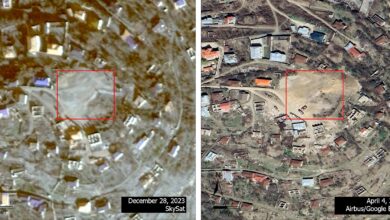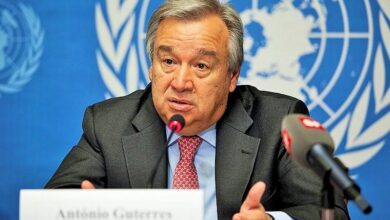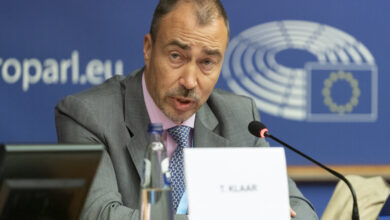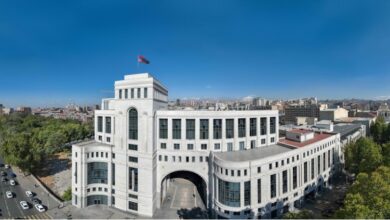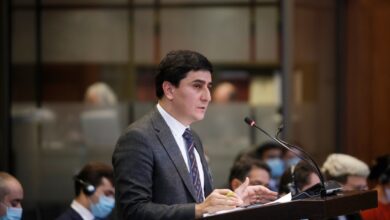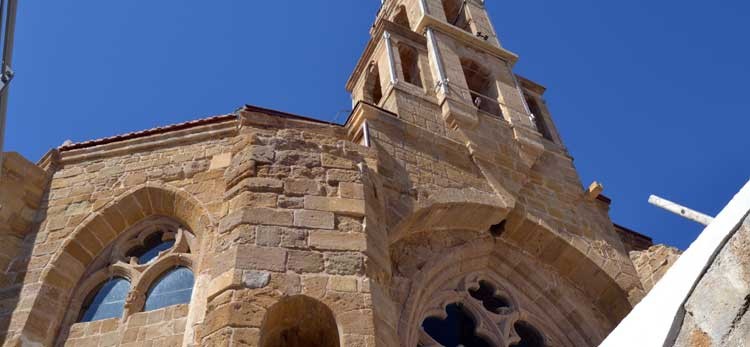
A local award ceremony for an EU Cultural Heritage/Europa Nostra Award prize in the category of Conservation will be taking place in Nicosia on Tuesday, recognising the work performed on an Armenian church and monastery in Cyprus, In-Cyprus reports.
Italian architect Paoli Vitti led the restoration team and wrote an article on the project, which was kindly shared with the media by Italy’s Ambassador to Cyprus Guido Cerboni.
In the article, Vitti describes the ancient Armenian Church and Monastery of Nicosia as “a pearl or gothic architecture of Cyprus” and outlines the role the Italian School of restoration played it is restoration.
Excerpts from Vitti’s article and a photo showcasing the restoration, which was also recognised in an Oslo ceremony in June, can be seen below:
“The site at stake is located in the northern part of the walled city of Nicosia, close to the “Green Line” which keeps the island divided in two parts to the present day. It is composed of a number of buildings which constitute true architectural gems, as they hold precious memories of the urban life of both the Catholic and Armenian communities, relating to a historical period spanning from the 1300’s to the 1900’s. In fact, many aspects of the site recall essential historical moments of the island, pertaining to the Lusignan, Venetian, Ottoman and British periods.
Thanks to the help of the USAID (US Agency for International Development) funds, the direction of the operations on behalf of the UNDP-ACT (United Nations Development Programme – Action for Trust) and the participation of an important Italian group of prominent architects specialized in the restoration and conservation of ancient structures, the Armenian Church and Monastery have been saved from a gradual deterioration that threatened to erase the memories that they have guarded until the present day. Moreover, this intervention has allowed the recovery and conservation of unique historical documents contained within the structures. The restoration project was commenced in 2007 and was finally concluded in 2012,” Vitti wrote.
He notes historical records corroborate the great significance of the Monastery, which was dedicated to the Notre Dame de Tortose and contained an icon of the Virgin Mary that is believed to have been painted by St. Luke.
He also noted: “The history of the Monastery is also closely tied to the Kingdom of Cyprus. Indeed, the pavement of the Church is encrusted not only with the tombstones of clerics, but also with the ones of knights and nobles of the respective period. Unfortunately, in 1960 the Department of Antiquities granted permission to the Armenian community to substitute the tombstones in question with a modern flooring. As a consequence, many of the gravestones at stake have gone lost. Luckily, however, a fundamental relic concerning the Cypriot funerary architecture was recovered, namely the monument of Abbess Echieve de Dampierre”.
Vitti added: “The restoration was not only aimed at the recovery of the architectural identity of the site, but also at the rehabilitation of the memories stolen from the Armenian community in the 1963 events. The Armenians have been finally able to celebrate a Mass in the site on the 11th May 2014 for the first time after fifty years. The Armenian community was at last reunited in its original place, steeped with memories of its past. After many decades parents were able to show their children the place where they have been baptized, where they have married, and where they have studied. In brief, the Armenian community was ultimately capable to claim back the site, and will hopefully succeed in the reintegration of its communitarian life. In the meantime, an agreement between the Armenian community and Evkaf, the Islamic religious organization which at the moment guards the site, has allowed for the use of the monastic buildings on behalf of Institutions which respect the history of the place and carry out instructional activities in the historical centre of Nicosia. The walled city is finally ready, also thanks to the presence of the Armenian Church, to reawaken and, hopefully, to ultimately overcome the barriers which still divide it”.


